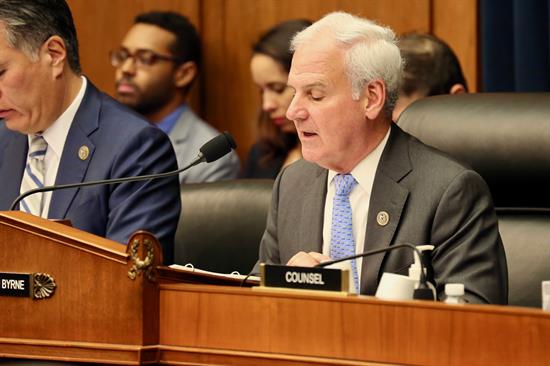Good morning, and welcome to today’s subcommittee hearing. I would like to thank our panel of witnesses and our members for joining today’s important discussion about the opioid epidemic and its implications for the Federal Employees’ Compensation Act (FECA) program.
Across the country, prescription opioids account for an alarming 40 percent of opioid fatalities. The national opioid epidemic, which late last year was classified as a public health emergency by President Trump, is devastating communities, workplaces, and the lives of working Americans across the country – including federal workers. According to the National Council on Alcohol and Drug Dependence, 70 percent of Americans misusing drugs, including opioids, are currently employed – a fact that has a significant impact on workplace health and vitality.
This public health emergency is not only impacting employees and employers in the private sector, but also has serious implications for the Department of Labor’s FECA program, which is responsible for workers’ compensation coverage for nearly 3 million federal employees nationwide.
FECA provides public sector employees with workers’ compensation benefits in the event of an illness or injury sustained in the performance of duty. FECA benefits include wage-replacement, reasonable and necessary medical treatment related to the injury, vocational rehabilitation and job placement assistance for disabled workers, and compensation for any impairment that results from the injury.
For years, the go-to treatment for many employees injured in the line of work was an opioid prescription. However, as prescribing practices have changed in the health sector, change has been slower in workers’ compensation programs. In 2016, the U.S. opioid prescribing rate was 61 prescriptions per 100 persons. However, according to the National Council on Compensation Insurance, injured workers who were given at least one prescription in 2017 received three times as many opioid prescriptions as the U.S. prescribing rate.
Additionally, local prescribing practices vary widely from state to state, and those practices may play a significant role in whether an injured federal worker receives an opioid prescription through the FECA program for an on-the-job injury.
In May 2017, the Department of Labor’s Office of Workers’ Compensation Programs (OWCP) announced changes to the FECA program to limit opioid prescribing practices and combat opioid abuse within the program. We applaud OWCP for these efforts, which are good first steps to limit the spread of unnecessary opioid prescriptions where a non-addictive alternative would be just as effective. However, challenges still remain.
Due to the broad geographical reach of federal employees and the discrepancies in state-by-state prescribing practices, it is important for members of the subcommittee to understand how opioids are prescribed to federal workers through the FECA program, and learn what steps can be taken to ensure the opioid epidemic is not being perpetuated through the use of federal government resources.
Today, we will be hearing from experts who are familiar with the Department of Labor’s programs and initiatives, and the inner workings of both federal and state workers’ compensation programs. Their testimony will provide members with invaluable insight into the opioid public health emergency, and its implications for the FECA program.
I look forward to hearing from our panel of witnesses and from other members of the subcommittee today as we examine the relationship between the federal workers’ compensation program and the national opioid epidemic.
To view the PDF, click here.
# # #

